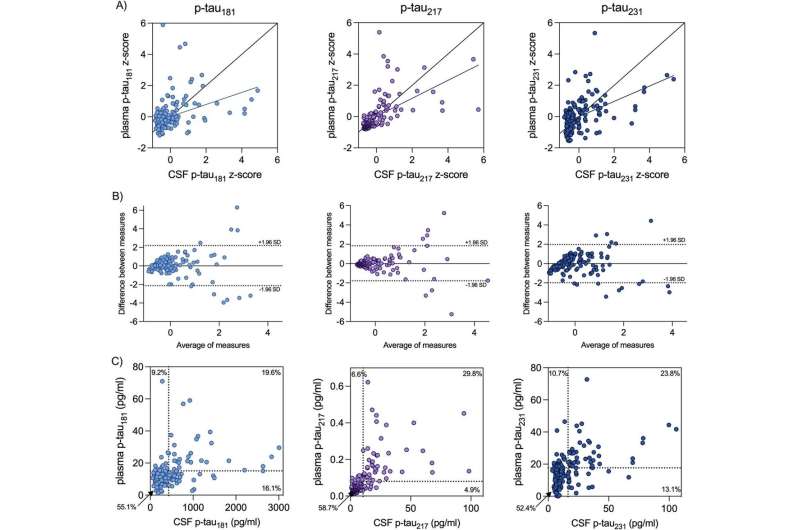This article has been reviewed according to Science X's editorial process and policies. Editors have highlighted the following attributes while ensuring the content's credibility:
fact-checked
trusted source
proofread
A more convenient and accessible way to diagnose Alzheimer's disease?

Despite extensive research and encouraging findings, Alzheimer's disease (AD) remains difficult to diagnose based on signs and symptoms alone. But what if one day, a blood sample during an annual check-up could be used to identify the disease?
A recent McGill-led study has found that a new kind of blood test is as effective at detecting AD as lumbar punctures, one of the current methods used to diagnose AD. Lumbar punctures, which are conducted by inserting a needle into the lower back to extract cerebrospinal fluid (CSF), are invasive and may not be accessible to all patients.
Building on previous work in which they developed the new blood test for AD in collaboration with scientists at the University of Gothenburg, the researchers studied a cohort of 174 individuals evaluated by dementia specialists. They assessed whether the same components that are commonly used to detect AD in CFS could also be used to detect AD in blood plasma.
The results indicate that one of the components, p-tau217, was equally as effective as a biomarker for detecting AD in both blood plasma and CSF. The researchers say this may reduce the need for invasive lumbar punctures without compromising accuracy in the identification of AD.
"These results suggest that the superior scalability and availability of blood biomarkers for Alzheimer's disease are not offset by worse accuracy, paving their way to one day be used in clinical practice," says Joseph Therriault, Ph.D. candidate in the Department of Neurology and Neurosurgery under the supervision of Dr. Pedro Rosa-Neto and lead author of the study.
The research is published in Alzheimer's & Dementia.
More information: Joseph Therriault et al, Equivalence of plasma p-tau217 with cerebrospinal fluid in the diagnosis of Alzheimer's disease, Alzheimer's & Dementia (2023). DOI: 10.1002/alz.13026




















